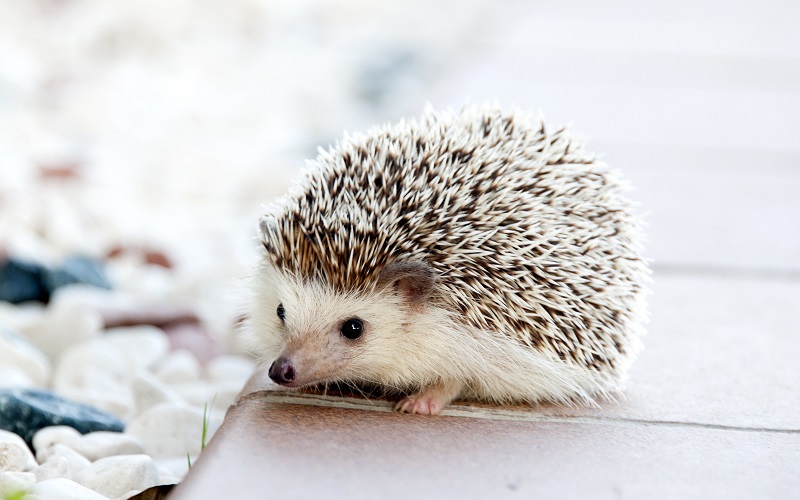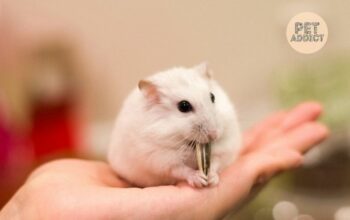From a wild animal, the African pygmy hedgehog has become a popular pet. Join Petaddict.net to learn about the shape, personality, and how to take care of this squirrel through the article below!
PetAddict.net – The best place where you can find everything about your pet!
History
The first individuals of dwarf hedgehogs are thought to have appeared on earth about 15 million years ago. African dwarf hedgehogs continue to exist. This shows that they are completely adapted to the environment around them, which is constantly evolving. The African dwarf porcupine is not closely related to other mammals. They share a common ancestor with the shrew.
One of many species of hedgehog found in Africa, Europe, Asia, and the Middle East. The African pygmy hedgehog lives in West and Central Africa. They live in savannas, open forests or sub-deserts, palm piles, rock crevices, and caves.
Appearance characteristics
African pygmy hedgehogs are classified in the family of porcupines, but they are very closely related to shrews. They have an elongated mouth, short legs but are not sluggish.
Despite its formidable appearance, the spines on the hedgehog’s back are mainly used for camouflage. Aim to deceive and intimidate the opponent. Their primary weapon is a very unpleasant characteristic of smell and taste. When in danger, the porcupine’s skin will secrete an oily substance with an unpleasant odor.
According to veterinarians, color is most accurate when the hedgehog is nine weeks old and up. After one year of age, the color will fade because the hedgehog is old at this time. Standard colors of hedgehogs include salt and pepper color, gray-brown, chocolate color, brown, yellow-brown, dark orange, champagne color, apricot color, pale apricot.

Behavior of the African pygmy hedgehog
– Nocturnal habits – more active at night than during the day. During the day, they often hide in bushes and caves to sleep. They like slightly dark environments, afraid of solid light. Therefore, when raising hedgehogs, choose a quiet place, avoid noise.
– Some adult hedgehogs may not like to be held despite being acquainted from an early age.
– They work within 1 mile in the natural environment.
– When the air temperature drops to 6-7℃, they will find a safe place to hibernate. The hibernation period can last up to 5 months (in cold climates). During this time, the hedgehog can sometimes wake up. But also do not work or eat anything.
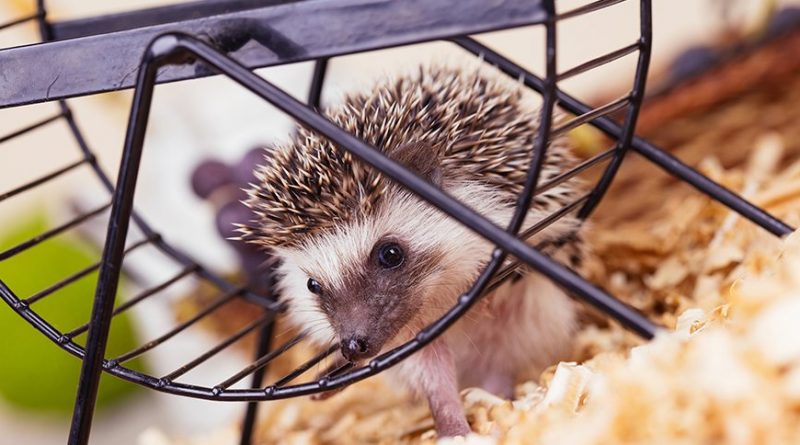
The best way to care for the African pygmy hedgehog
African pygmy hedgehog habitat – African pygmy hedgehog cage
Hedgehogs perform best in a temperature range of 21℃ to 27℃. The best temperature for ornamental hedgehogs is around 25℃. Therefore, place the hedgehog cage in a warm, comfortable room. Avoid putting in noisy places like the living room as the sound coming from the TV can affect them. Also should not be placed outdoors, where there is direct sunlight, do not let the air conditioner blow the temperature directly into the barn.
Do not put the hedgehog cage in a place that is too dark. Because if they are not illuminated, likely, the metabolism in their body is not going smoothly, leading to health effects. Avoid placing the cage in a place where there are many ants, rats, or cockroaches. These insects and pests can spread disease or attack your pet. At the same time, they can spoil the food and cause illness for the hedgehog.
You should regularly clean or change the mulch layer of the cage. Do not use perfume or room spray to spray the hedgehog cage. This can affect their ability to breathe. When the outside temperature is low, you can warm the hedgehog cage by heating devices such as heaters, heating pads, heating lamps, heating bags, light bulbs,…
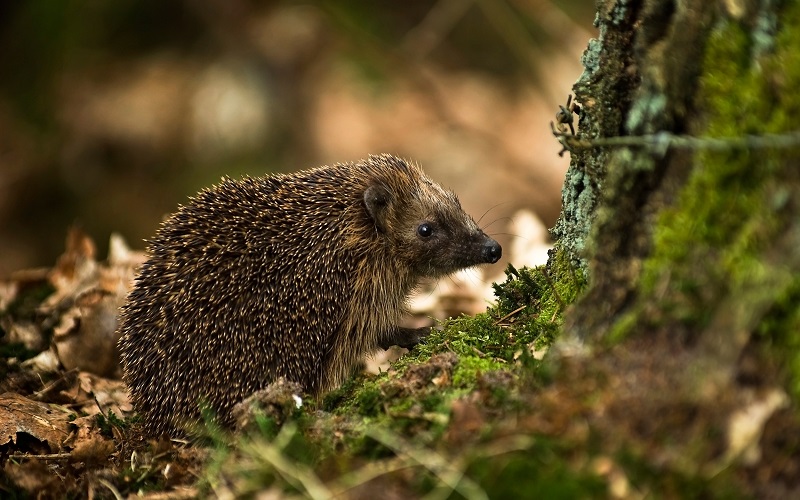
African pygmy hedgehog food
The African pygmy porcupine is an omnivore, and in the wild, they mainly depend on foraging for invertebrates and small vertebrates. In addition, there are plants such as grassroots, fruits, melons… for food. Reptiles, crickets, small insects, grassroots, fruits, melons, caterpillars, beetles, snails, worms… can all be fed. The African dwarf hedgehog is nocturnal, so before dark, you should provide and drink clean water.
In the past, cat food was the only food for ornamental hedgehogs, but today there is food specifically for hedgehogs. Hedgehogs raised in the family can mix their food. For example, a mixture according to the ratio of meats, foods with by-products, green vegetables. Chicken can also be fed; they love to eat this meat :
+ A light or reduced-calorie, high-quality adult cat food can be used if no hedgehog food is available) about three teaspoons/day.
+ One teaspoon daily with chopped mixed vegetables and fruits (beans, carrots, apples, pears, berries, squash, peas, potatoes.
+ Feed live insects such as intestinal crickets, mealworms, earthworms, 3-4 times a week (avoid waxworms as they are high in fat)
+ Diet is essential as obesity is one of the most common medical problems in ornamental hedgehogs.
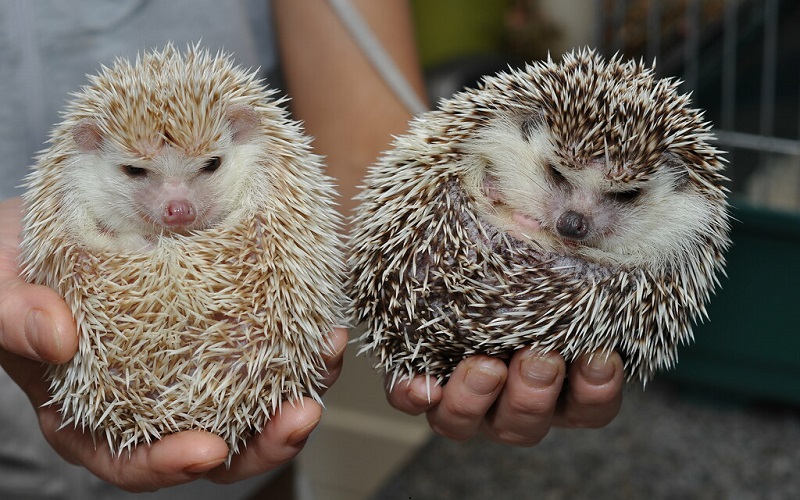
African pygmy hedgehog care
– Regular health check every 6 to 12 months.
– Check stools annually for parasites.
– Blood tests as recommended by your veterinarian.
– Regularly bathe the hedgehog.
Take care of reproductive health
According to the share of many longtime hedgehog owners, the porcupine is an adult in 50 days. But if you want to get pregnant and have a baby, it must be six months or more to be safe. Suitable for the health and body condition of the female hedgehog. June to August each year is the breeding period of hedgehogs. Pregnancy 1-2 times a year, the gestation period is 35-37 days. Each pregnancy has 3-7 children.
When the hedgehog is pregnant, there are many signs that the owner can observe. As follows:
– Weight and food intake increased. When the hedgehog is pregnant, the weight can be nearly two times every day.
– The stools will be relatively coarse, will often contain some fluid, and will also like to urinate.
– Do not like to exercise all day lazily scratching the itch.
– Will be aggressive towards male hedgehogs.
– At the end of the pregnancy, there will be a black line on the mother’s belly; the closer it is to birth, the more obvious it will be.
– The genitals will become more apparent. For example, after about 30-45 days, there is still no sign of wanting to have a baby, then it is probably just getting fat.
If it is determined that the porcupine is about 32 days pregnant, the mother must be isolated. Try to maintain a quiet, well-lit environment. Except for the mandatory feeding for a day, then don’t disturb it. Do not look at the hedgehog’s belly often, or let them exercise or play with them. Let it breed in peace or feel unsafe or overstressed, leading to a miscarriage or eating the baby hedgehog. You also need to prepare a birthplace large enough for the mother hedgehog. If the birthplace is too small, the baby hedgehog will be easily squeezed after birth.
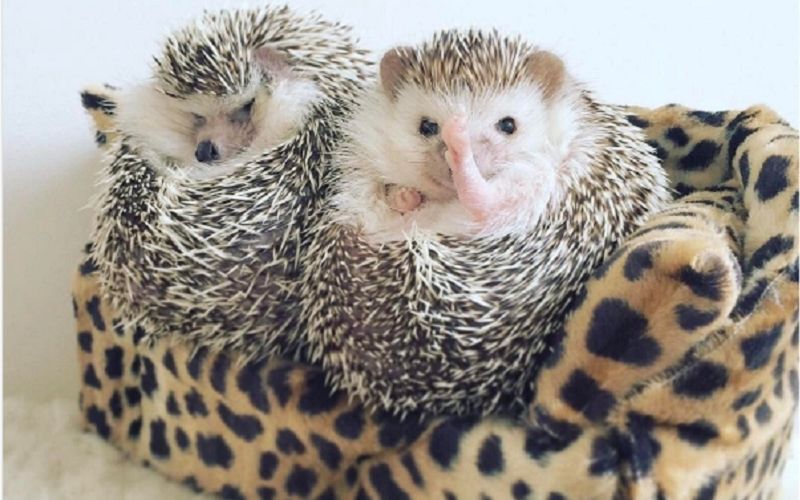
Common diseases
– Oral and gum disease can largely be prevented by eating a proper diet, which may require regular brushing and scaling.
– Salmonella infection causes loss of appetite, diarrhea, dehydration, and weight loss. Can become a carrier of disease and can spread disease to people or other pets- Dental disease, gingivitis, loose teeth
– Termite infestation leads to scaling, scaling, loss of spines
– Fungal skin disease
– Obesity
– Eye damage
– Injuries to the legs and feet
– Liver disease
– Kidney disease
– Respiratory tract infection
When giving medicine to hedgehogs, you can use it with a syringe or mix it with their food.
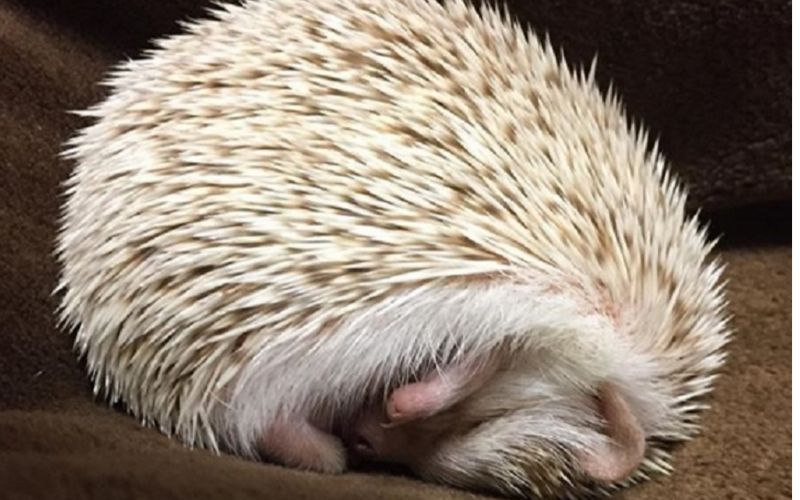
African pygmy hedgehog training
Training hedgehogs to get acquainted with people
With apartments in urban areas, it is normal for people and animals to go back and forth often. Hedgehog Hedgehogs are very timid; if not acquainted from a young age, they will not dare to go to the toilet when strangers are present.
To get used to its owner, you must regularly sit next to the hedgehog’s cage. Talk to it and feed it, helping it get used to your sounds and scents. Play with it with other members. Once used to it, hedgehogs will roam freely around the house like other pets.
Training Hedgehog to defecate in the right place
First, prepare a litter tray for the hedgehog. The toilet tray is about 7-7.5cm high, 30*30cm wide. Spread some specialized toilet sand or cat sand, wood chips. Preferably the one that is odorless, colorless, and absorbent. Remember to clean regularly.
You can put the litter tray in the cage or choose a fixed place in the house to let the hedgehog defecate. It can be a hallway, a balcony, a corner of the bathroom. Make sure the toilet area is always dry and ventilated. Sprinkle some old newspaper or nylon to keep it clean.
When he needs to go to the bathroom, the Hedgehog usually runs around for a while. Or it will run to the owner, calling loudly to signal. Hedgehogs stand still, constantly sniffing around. Now bring it to the designated place. After it’s done going to the bathroom, reward it or give it some food.
When you find a hedgehog urinating, you must immediately bring it to a designated place. If he has already gone to the bathroom, press his nose against the waste and reprimand him. At the same time, show a strict attitude to talk.
Several times like that, it will know the behavior is wrong. Hedgehogs are not as smart as cats and dogs, so training them will take more time. You have to be persistent, constantly repeating the lessons. Let it form the toilet reflex in the right place.
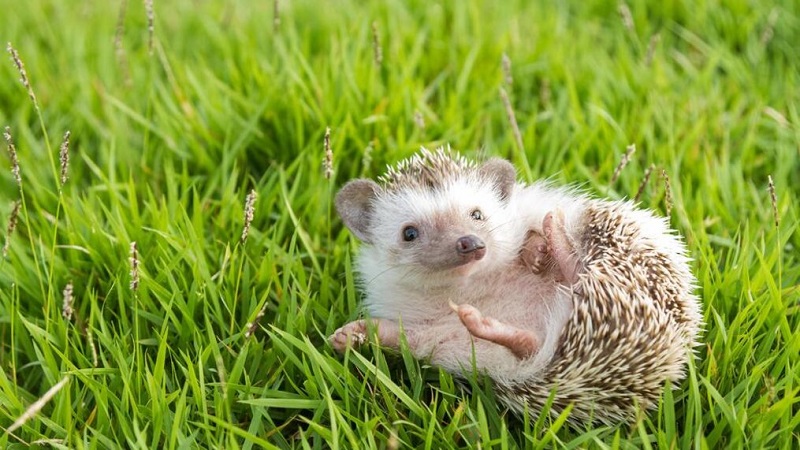
What to pay attention to when training hedgehogs?
If the hedgehog doesn’t let you hold it, wrap it in a towel. Do not use gloves to handle the hedgehog; the hedgehog will not smell you. Avoid corporal punishment or swearing, and it won’t know what it just did wrong.
Moreover, it will cause psychological pressure, making you even more alienated from yourself. Especially do not use objects to hit it; if you are not careful, you will injure it. When it does the right thing, reward it at the right time. You can give it some fruit or powder worms.
Some outstanding figures about the African pygmy hedgehog
- 17: the number of dwarf hedgehogs in the world.
- 35: number of days of gestation of the female hedgehog.
- 40g: in the amount of food per meal for an adult African hedgehog
- 90%: dwarf hedgehogs in the wild have 90% not living more than 1 year
- 4: April every year is the mating season of dwarf hedgehogs
- 6℃: the body temperature of the hedgehog in hibernation. Among the lowest among animals.

Some frequently asked questions about the African pygmy hedgehog
How much does the African pygmy hedgehog cost?
The average price to buy an African pygmy hedgehog ranges from $100 – $500
How long do African pygmy hedgehogs live?
The average lifespan of an African pygmy hedgehog in the wild is 1-4 years and 5-10 years in captivity.
Where do African pygmy hedgehogs live?
The African pygmy hedgehog lives in West and Central Africa. One of many species of hedgehog found in Africa, Europe, Asia, and the Middle East. They live in savannas, open forests or sub-deserts, palm piles, rock crevices, and caves.
Read more: Small Pet
Conclusion
Above are the basic skills to take care of the African pygmy hedgehog. I hope the article will be useful to you and remember to follow Petaddict.net to know more knowledge about pets.

